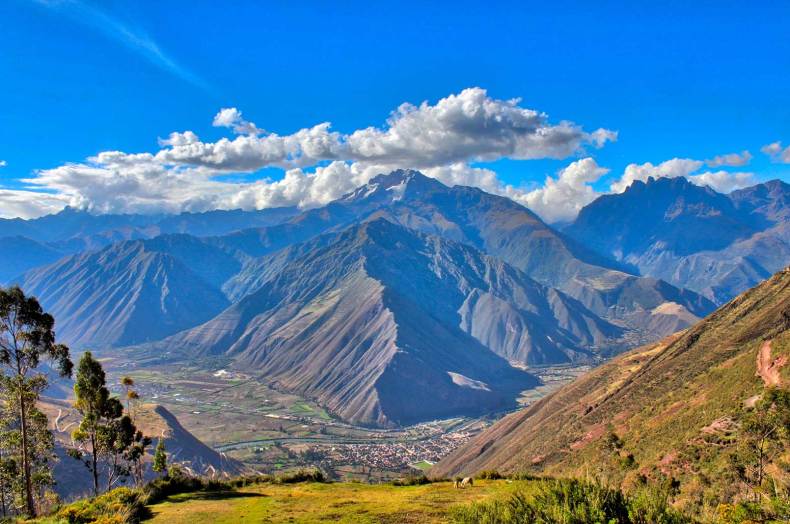After covering Paracas and Nasca, we got back to Lima to catch our flight to the most popular tourist destination in Peru – Cusco. Cusco was the capital of the Incan Civilization that flourished till the arrival of the Spanish in 16th century. Now it is a major tourist destination, with over 2 million visitors every year! It also serves as the main gateway to the Sacred Valley of the Incas, which contains the many historic towns, villages and ruins, most famous being Machu Picchu!
Flying into Cusco
Cusco is situated at an altitude of 3400m or 11200ft (similar to Ladakh in J&K, India). As it is a major destination, it is well connected via air, road and rail. Fastest way to reach is to fly.
However, flying from city like Lima which is at sea level is bound to cause Altitude sickness. So we decided to visit Cusco later and headed straight to Ollantaytambo, a small town in the heart of the Sacred Valley. Since it is located at a much lower (<2800m) it would be easier to acclimatise while having reduced effects of altitude. We had carried medicines for altitude sickness, but fortunately didn’t face any issue.
We arranged our transfers through a reputed company called Taxidatum. The driver was waiting for us at the airport with a sign board. This was not a straight transfer to Ollantaytambo, but combined with 3 stops on the way – Chinchero, Maras and Moray. As we left Cusco town, the road started to descend through scenic valleys. Our first stop on the way was picture perfect!

Chinchero Village
After a while we entered the village of Chinchero – a small Andean village in the Sacred Valley which also is a main market place for local products. Both sides of the narrow cobblestone paths are filled with souvenir shops selling Alpaca wool products.

The village is situated on a hill. Soon we realised that climbing here is no easy task! The air is thin and you start panting very fast. However the climb was short this time and the view was worth it. Imagine waking up to a view like this from your home every day!


Salt mines of Maras
Next stop was the Salt Mines or Salineras at Maras. Usual visitors have to alight at the entrance and walk down the long route. But we were short on time. Knowing that, our driver who was a local talked with the officials and took us in car itself till the inside!

This is how the Incas produced salt. Being so far away from the sea, they found that the spring water coming out from this mountain had high levels of salt. So they channeled this water into multiple ponds, made on the hill side. The water evaporated under the sun and salt was ready for the taking!

Ruins of Moray
The last stop before reaching Ollantaytambo was Ruins of Moray. We reached just in time before the site closed for the day!

This is a very special site as it demonstrates the technology the Incas possessed in medieval times. The site consists of concentric steps that reduce in diameter as you go deeper. As you go each level down, the temperature decreases! This enabled them to regulate temperatures and grow crops more productively!

As we left Moray the light was too good to resist taking few pictures. The Andean foothills are so pretty!


We reached Ollantaytambo by dusk and checked in to the hotel. More about it in next post!








Love the photography and the blog ! Well done Swati and Rahul.
Thanks a lot Sana 🙂